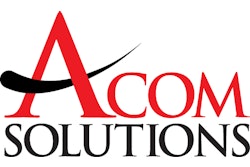Only a fraction of suppliers will beat retailer's January 2005 mandate for radio frequency identification compliance, Forrester predicts
Cambridge, MA — April 16, 2004 — The typical supplier will have to invest about $9 million to meet Wal-Mart's looming deadline for radio frequency identification (RFID) compliance, according to a recent report from technology consultancy Forrester Research.
In the report, "RFID At What Cost?," Forrester predicts that just 25 percent of suppliers will meet Wal-Mart's January 1, 2005, deadline. The consultancy also says that the estimated $9 million investment covers just the startup implementation costs for RFID compliance and one year of maintenance annually.
"There is no business case for most suppliers in the short term," says Forrester Research Senior Analyst Christine Spivey Overby. "The technology is not ready, and there is a lack of deep expertise in the industry to help suppliers implement RFID."
Forrester noted that the total cost of compliance will vary depending on a company's distribution network and Wal-Mart volume. The consultancy's model included costs associated with infrastructure, software, consulting and new warehouse labor.
The largest costs remain constant from supplier to supplier, highlighting major challenges that will impede RFID deployments, according to Forrester.
Tags currently make up more than 80 percent of a supplier's cost. Based on today's tag production processes and projected volumes, Forrester believes that suppliers should not build a near-term business case on any price lower than $0.40 per tag. (Much of the "hype" around RFID has been focused on lowering the per-tag cost, with many industry analysts predicting that the technology will not really see widespread adoption until that cost comes down to $0.05 per tag or less.)
Professional services spent on getting distribution centers operational are high and will only increase, due to a short supply of experienced RFID experts, Forrester writes.
In addition, converse to what many believe, companies implementing RFID should expect to add supply chain labor to their budgets in the first year, because vendors have yet to perfect solutions for automating tagging and embedding RFID in packaging material.
To gain benefits such as product tracking, businesses need to begin RFID implementation at the manufacturer, rather than at the distribution center, which is one step closer to a retailer in the supply chain, Forrester believes. Today, "source tagging" cases at the manufacturer is too disruptive for most companies to implement.
Because source tagging requires significant process re-engineering and budgets that top $100 million in some cases, RFID early adopters like Gillette are the only companies that will attempt this approach in the next 12 months, the consultancy predicts. In the short term, a "slap-and-ship" approach, in which suppliers tag cases and pallets in the distribution center, is the most realistic scenario for a majority of suppliers.
The report recommends that Wal-Mart redefine the scope of its RFID mandate by narrowing the scope of products to those with limited amounts of metal and liquid. With a narrower focus on high-priced products like prescription drugs, apparel and DVDs, fewer suppliers would be affected by the 2005 mandate. It would also allow vendors and suppliers additional time to perfect tag reliability for all products. Forrester also recommends that Wal-Mart use its influence to help create a buying consortium, giving suppliers the collective power to cut tag costs.
On the other side of the supply chain, Forrester suggests that suppliers use their initial learnings to shape mandates by Wal-Mart and other retailers. In addition to addressing the challenges they are facing in implementing RFID with Wal-Mart, suppliers should create an internal RFID lead position with direct access to the CEO, the consultancy recommends.










